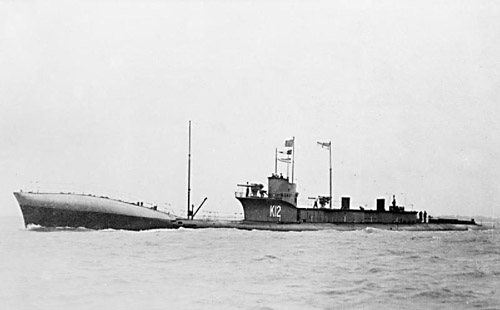| 97 years ago today the Royal Navy had a tragic ‘friendly fire’ accident that resulted in the loss of 105 submariners’ lives. There were many human factors elements to the disaster, including the design of the submarines, loss of situational awareness, communication and planning. The events are now known as the “Battle of May Island", although no enemy was present. On the evening of the 31st January 1918 Admiral Beatty took the Grand Fleet to sea from Rosyth in the Forth of Firth, Scotland, for an intensive exercise. The fleet included nine K-class submarines. These used steam power on the surface and ran on batteries when submerged. The process of getting one of these craft ready to submerge was complex and took at least five minutes. It was thought that a German submarine was in the area, so all ships concealed their external lights and maintained radio silence. In addition, the fleet travelled at speed in a single line to make them a more difficult target. Two battleships led the formation, HMS Corageous and HMS Ithuriel, travelling at 19 knots. Following them were five submarines (K11, K17, K14, K12 and K22), running nose to tail, and following the shaded blue stern light of the submarine ahead. Behind them were five battlecruisers escorted by destroyers, then the other four submarines (K4, K3, K6 and K7), followed by the rest of the fleet of more than 40 ships. Suddenly two British minesweepers, ignorant of the exercise in progress, swept across in front of them. The first two submarines changed course successfully, but the third submarine’s (K14’s) rudder jammed as it turned forcing it to complete a circle. This put it broadside on to submarine K22, which saw it too late to avoid it. The resulting collision left both submarines dead in the water, in the path of approaching surface ships. They were nearly run over and sunk by four of the battlecruisers, but the fifth (HMS Inflexible) was unable to avoid them and hit K22. Miraculously, K22 stayed afloat, but severely damaged. The leading ship, HMS Ithuriel sent a radio message to the other ships to warn of the incident. HMS Ithuriel, followed by the remaining three submarines, then turned to go and help the stricken submarines. These four ships found themselves having to rapidly weave a path through ships coming the other way who were yet to make their turn. However, no message was sent to the rest of the fleet to warn them that they had turned and were now steaming directly towards them with a closing speed of more than 30 knots. Inevitably, the fleets ran amongst each other. The first collision was between the returning submarine K17 and the outward-bound HMS Fearless. The crew of the submarine all escaped into the water as the submarine sank. As the ships all tried to avoid each other two of the outward-bound submarines, K4 and K6, collided. The two submarines were locked together, K4 almost cut in half. Eventually K6 broke free, but K4 sank. A radio message had finally been sent to the rest of the fleet, but this was too late for them to take evasive action and the huge dreadnoughts and their destroyer escorts, ploughed through scene, killing many of the submariners who were in the sea awaiting rescue. The result of the exercise was the loss of two submarines, three more crippled, one light cruiser severely damaged and 104 submariners dead. Only ten submariners were pulled from the water, one of these dying later. Given the wartime conditions, the disaster was kept a secret from the British public, with the events being made public only recently. A memorial to the disaster was erected at Anstruther harbour in 2002. |
|
0 Comments
Your comment will be posted after it is approved.
Leave a Reply. |
Archives
November 2020
Categories
All
|




 RSS Feed
RSS Feed